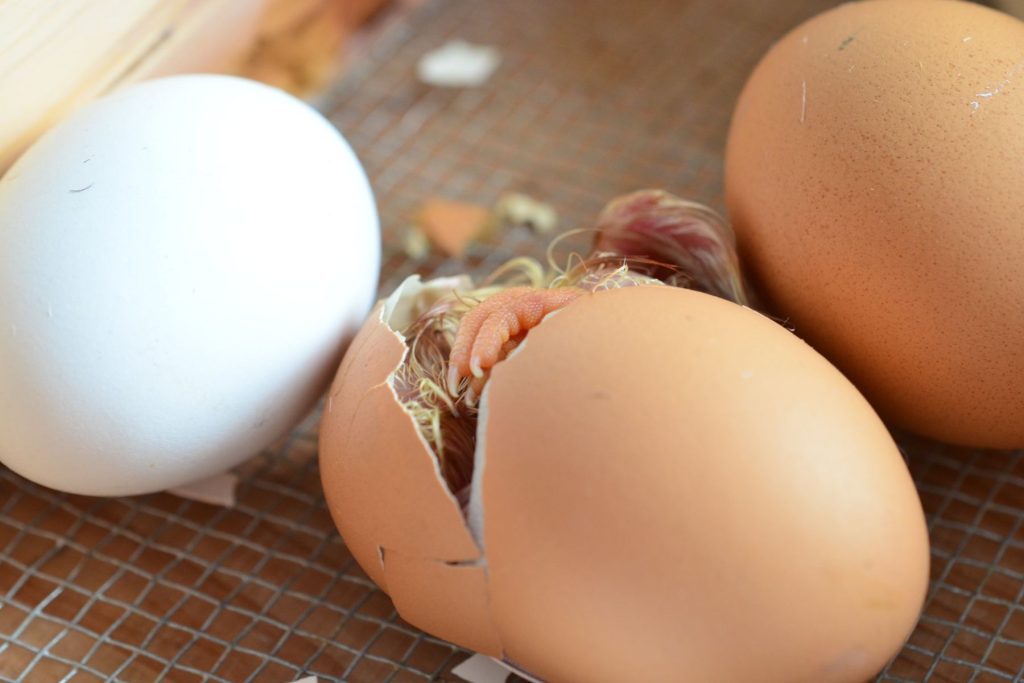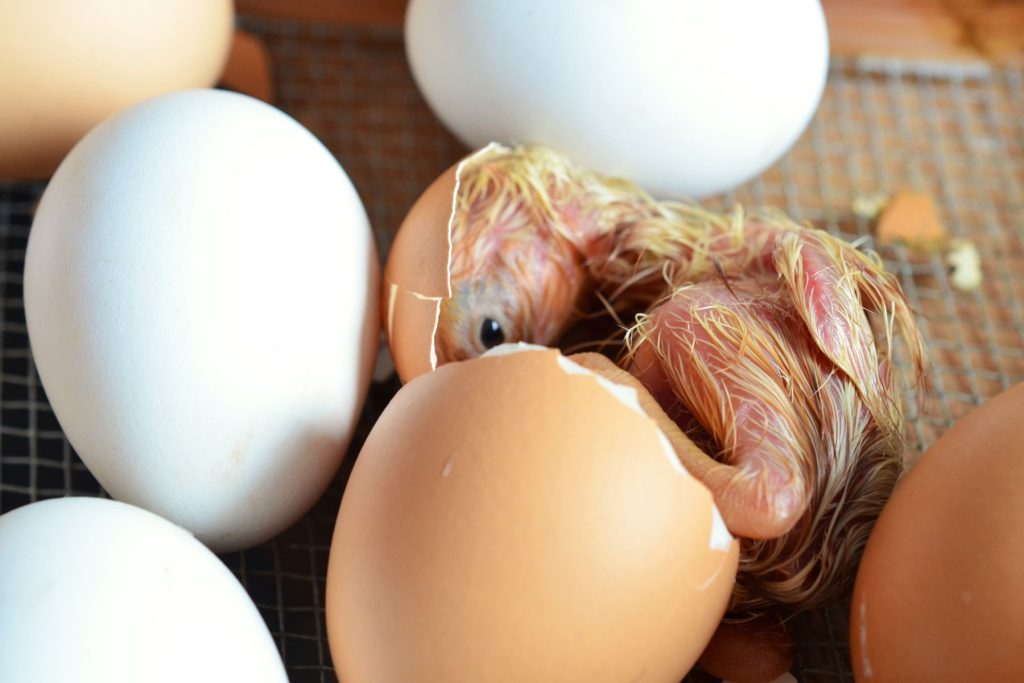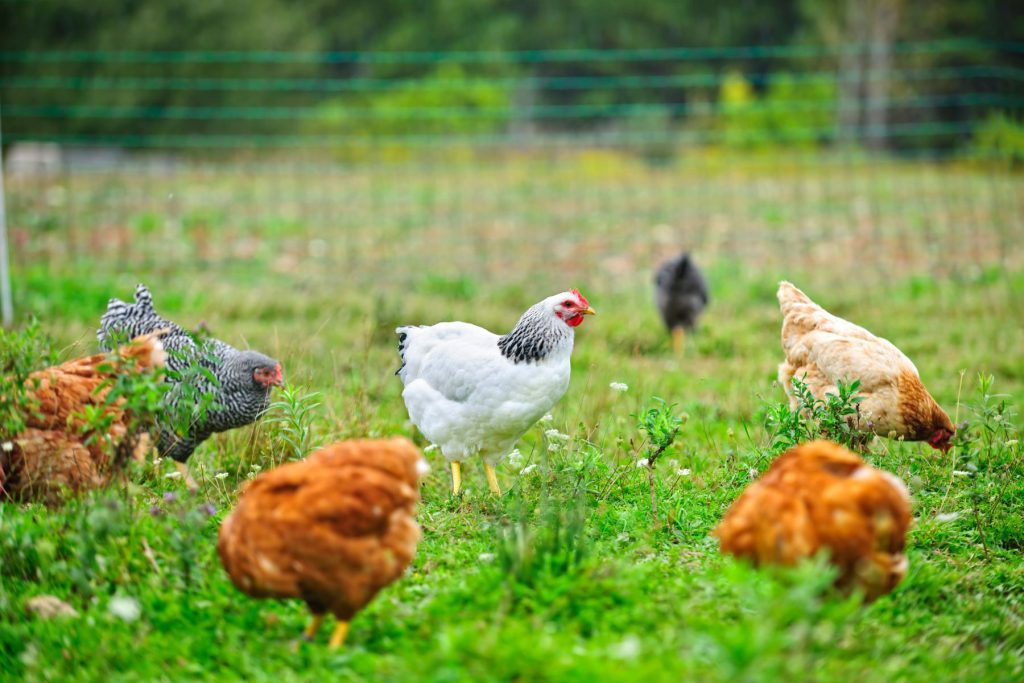Glossary of Terms Every Backyard Chicken Keeper Needs to Know
Welcome to the glossary of terms every backyard chicken keeper needs to know! When we first started keeping backyard chickens, I often found myself reading an article or talking to a seasoned chicken keeper and all of a sudden realized I had no idea what they were talking about. If you plan on getting involved in the chicken world, it’s a good idea to familiarize yourself with common terminology. Pretty soon, you’ll be able to keep up with all of the expert chicken keepers!

This post contains affiliate links. As an Amazon Associate, I receive a small commission at no additional cost to you. Read my full disclosure here.
the glossary of terms every backyard chicken keeper needs to know:
Chickens are a pretty low-maintenance animal, which is why so many people love raising chickens. However, there is a lot of information that is helpful to know if you’re looking to have fresh eggs in your backyard every morning. From the many kinds of chicken feed to all the different breeds available, you’ll want to have a little research under your belt before diving into full-fledged chicken keeping. This post is a helpful glossary of terms every backyard chicken keeper needs to know.
life stage and gender terms –
Chick – A young chicken that still has all or part of its down feathers. Any chicken from freshly hatched until about 8 weeks of age is classified as a chick. ‘Chick’ also includes both male and female baby chickens.
Juvenile – A young chicken between the chick and adult chicken stage, typically between 8 and 18 weeks old. Includes both male and female birds.
Adult – A sexually mature chicken.
Pullets – A juvenile young female chicken under the age of 1 year. There’s a point where the chicken is no longer a chick but not yet an adult chicken, and this is when the females are referred to as pullets.
Hens – An adult female chicken over 1 year of age. A hen is both physically and sexually mature. Hens will lay eggs and occasionally sit on clutches of eggs to hatch them out.
Layers – An adult female chicken that lays eggs consistently.
Cockerels – A juvenile young male chicken under the age of 1 year. In the same way that young female chickens are referred to as ‘pullets’ in between chick stage and adult stage, a young rooster is referred to as a cockerel.
Cock – An adult male chicken, over 1 year of age.
Roosters – A male chicken at any age is referred to as a rooster. Roosters are a good asset to a flock for protection and egg fertilization.

anatomy terms –
Comb – The top portion of the chicken’s head that is typically red and fleshy.
Wattle – The large flaps of flesh that dangles from a chicken’s chin.
Earlobe – A fleshy area on each side of a chicken’s head. An interesting thing about a chicken’s earlobes is that you can sometime use it to tell what color egg the hen will lay. Chickens with white earlobes are likely to lay white eggs, chickens with red earlobes will probably lay brown eggs.
Crop – A sack near the base of a chicken’s neck on the right side of the upper breast that holds the recently eaten food. The crop starts the digestion process.
Gizzard – Where the food goes after it leaves the crop. The gizzard is where the food begins to get digested. Chickens store grit such as sand and small pebbles in the gizzard to help grind down their food. Basically chewing since they don’t have teeth.
Shanks – The scaled part of a chicken’s leg.
Spurs – A hard pointed growth on the shanks that points toward the back and slightly inside. Most commonly found on roosters, but hens can grow spurs as well.
Vent – The vent area of a hen where the egg is expelled.
Hackle feathers – The neck feathers.
Saddle feathers – The feathers just in front of the tail.
Sickle feathers – The curved feathers in the tails of most breeds of roosters.


breeding and hatching terms –
Broody hen – A laying hen whose hormones have made her want to sit on eggs and hatch out chicks.
Candling – The process of shining light into an egg that has been incubated to check the viability of life.
Lockdown – The final days if incubation when you should stop turning the egg and increase the humidity in the incubator (days 18-21). Chicks position themselves to hatch during lockdown and the increased humidity makes hatching easier.
Zip (zipping) – The process that a hatching chick goes through by circling around the egg (inside) and creating a row of holes so that it can pop the top off of the egg to hatch.
Pip (pipping) – The small hole that a chick pokes through the egg when getting ready to hatch.
Hatch – When a baby chicken comes out of the egg.
Egg tooth (or chick tooth) – A tiny horn-like projection that comes off the tip of the upper beak of a chick that has just hatched. The egg tooth helps the chick to break the shell, and then dries up and falls off within 12-24 hours.
Clear – An egg that shows no embryo development when candled.
Blood ring – An egg that shows a ring of blood when candled. This indicates that the embryo died early on in development.



housing and equipment terms –
Chicken coop – The chicken house, sometimes called the hen house. This is a safe dwelling place for chickens. When choosing a coop, keep in mind that chickens each need about 4 square feet of space.
Nesting box – A box in the chicken coop where a chicken goes to lay eggs,
Bedding – The material that lines the coop floors and nesting boxes, typically straw, wood shavings, cardboard shavings or organic matter.
Roost – The high bars in the chicken coop that chickens perch on at night to sleep.
Heat lamp – A heat lamp is often used as a supplemental heat source in a chicken coop. However, heat lamps are generally not recommend because of the major risk of fire.
Chicken run – An enclosed area attached to a chicken coop that allows chickens to run around and peck the ground.
Incubator – A machine that hatches eggs through heat and air circulation.
other terms every backyard chicken keeper needs to know –
Flock – A group of chickens.
Cull – The act of getting rid of a chicken, either through butchering or selling.
Molt – The process of shedding old feathers to make room for new ones, typically taking place in late summer or fall. When a hen molts, she starts losing feathers from the axial feather out.
Dust bath – The way that chickens care for their feathers and skin. Chickens dig shallow holes in the dirt and toss it onto themselves with their wings. The dirt coats their feathers and settles next to their skin, absorbing excess moisture and oils.
Straight run chicks – Straight run is a common term used when referring to chicks, and it simply means unsexed. This term is most often used when ordering chicks, and straight run chicks means that the baby chicks will be sold as they hatch and you will receive a random mix of male and female chicks.
Sexed chicks – This is the opposite of straight run chicks. When ordering day-old chicks that have been sexed, you are able to get whatever combination of hens and roosters you would like.
Non-setter – A breed of chicken that does not typically go broody.
Bloom – The protective coating on the eggshell.
Egg song – The consistent squawk that a hen makes for a minute after laying an egg.
Clutch – A nest of eggs that a broody hen has decided to sit on and hatch out.
Nest egg – A fake egg (usually ceramic) placed in each nesting box to teach pullets what the nesting boxes are for.
Pecking order – The hierarchy of the chicken coop.
Crowing – A loud call made by roosters at any time of the day or night. Dominant hens may crow if no rooster is present.
Free range – When a chicken is raised in open air and free to roam. Free range chickens are fed much less feed (or none at all) when they have access to land to forage.


other information for chicken keepers –
Chicken feed – Store bought chicken feed comes in 3 forms – pellets, crumble and mash. There are 8 different types of feed available depending on the stage and purpose of your chickens. These types are chick starter, grower feed, layer feed, flock raiser, broiler feed, game bird feed, fermented feed and cracked corn. Chicken feed can be purchased from feed stores or farm stores. Chickens will need to have access to their feed every day along with clean water.
Chicken breeds – There are many, many different types of chicken breeds. Depending on what you are raising chickens for, you will want to do some research on the best breed of chicken to suit your needs. For example, if you’re looking for a laying hen, you will choose a different breed than if you wanted to raise a chicken for meat. Different breeds have different strengths and weaknesses, so you can curate your backyard flock to fit your hopes and plans.
While this list is a good start, it is nowhere near exhaustive! There is plenty of other terminology that you can learn, this glossary of terms every backyard chicken keeper needs to know contains the terms you’ll hear most often. If you are just starting out, or if you are still tossing around the idea of starting a backyard flock, I want to share one resource that I found especially helpful:
This book – The Homesteader’s Natural Chicken Keeping Handbook has been a great go-to guide to have at home! I read through the book completely before we got our chickens, and I have referred back to it quite often as different scenarios have come up. One thing I absolutely love about this book is the natural approach that the author takes with her flock. The book is full of herbal remedies, essential oils, and different foods and treats to give your flock to keep everyone happy and healthy.
For lots more information on natural chicken keeping, visit Amy’s website HERE!
pin this glossary of terms every chicken keeper needs to know for later –

popular recipes using eggs –
If you have already begun your backyard chicken keeping journey, then you probably understand the amazingly bountiful summer season that yields plentiful eggs. Here are a few recipe ideas that use eggs, ensuring none of them go to waste!

I’ve had chickens for years and didn’t know some of these!